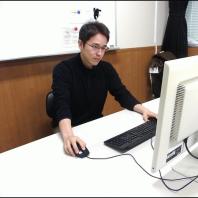![]()
![]()
Research Support Office Research Advancement Division. Tokyo University of Agriculture and Technology
| TEL | +81-42-367-5944 |
|---|---|
| FAX | +81-42-367-5946 |
This program is supported by MEXT’s scientific technology human resource development fee grant, "Program to Disseminate Tenure Tracking System".
Home > Tenured Faculties > Horikawa Yoshiki

Horikawa Yoshiki

| Affiliation | Institute of Agriculture |
|---|---|
| Division | Division of Natural Resources and Eco-materials |
| Research field | Natural Resources and Eco-materials |
| Keyword(S) | Cellulose, Biomass, Cell wall, Spectroscopy, Electron microscope |
| Url | https://sites.google.com/go.tuat.ac.jp/biosf/ |
| Research experience | ・Apr. 2008 - Aug. 2008: Researcher in Research Institute for Sustainable Humanosphere, Kyoto University. |
|---|---|
| Educational background | ・Mar. 2002: Bachelor of faculty of applied biological sciences, agricultural department, Nagoya university. |
| Awards | * The latest information is shown at the member's website. |
| Selected papers and publications | * The latest information is shown at the member's website. |
Large consumption of fossil fuel resulted in depletion of resources and globally changed the environmental condition; in addition, Japan had big damage by radioactive contamination, which makes us reflect on the reliability of science and technology, and requires renewable as well as safety sources. Wooden biomass, satisfying the abovementioned requirements, has an advantage in that carbon resources are accumulated as trees in forest and we can use them anytime we need. Usage of wooden biomass for material and energy decreases the consumption of fossil fuel and may contribute the construction of recyclable society by using its economic benefit for planting and caring forests.
It is, however, essential to understand this high biostructure for developing functional material or better energy conversion. We have to precisely study various functions of wooden molecules depositing in cell wall by macro- to nano-structural analysis. I am going to investigate the suprastructure of cellulose microfibril, its interaction with matrix components, and relationships with cell and anatomical features as well as diversity of wood species for more effective utilization of wooden biomass.
An independent research is to determine the target “for what, what, how, and how far I do” and promote it by myself. Tenure-track is an attractive program because it supports sufficient budget and gives time by decreasing the duties except for research. The employment period of 5 years also provides good opportunity for training to consider the limit and departure to other research field, which would be valuable after getting a position. In addition, this program includes the student advising, therefore I would work as a staff belonging to university as a researcher and at the same time as an educator.
An advantage in university research is to concentrate on fundamental study, which differs from institutional research. But we have to promote our investigation with keeping better cyclic usage of plant biomass as a goal for the future. By collaborative interaction with researchers who study in other fields, fresh idea and angles are to be introduced for developing my research and pioneering a new field in the future.